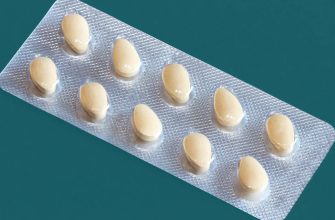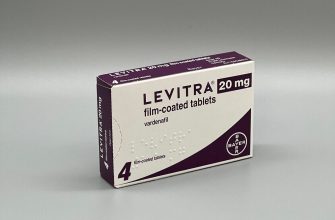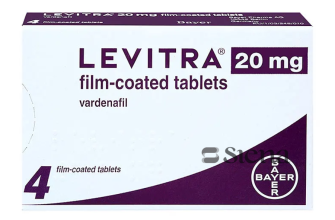Need a diuretic alternative? Consider exploring Bumex (bumetanide) or Demadex (torsemide). These loop diuretics share a similar mechanism of action with Lasix (furosemide), effectively promoting fluid excretion. They offer varying potencies, allowing for personalized treatment adjustments.
Bumetanide generally boasts a longer duration of action compared to furosemide, potentially requiring less frequent dosing. Conversely, torsemide provides a more predictable response with a longer half-life, potentially simplifying treatment regimens for patients. Remember, individual responses vary, and close monitoring is essential regardless of the chosen alternative.
Always consult your physician or a qualified healthcare professional before switching medications or making any changes to your treatment plan. They can assess your specific needs, consider potential interactions with other medications, and ensure the chosen alternative aligns with your overall health status. Your doctor can also monitor your response to the new diuretic and make any necessary adjustments.
Disclaimer: This information is for educational purposes only and does not constitute medical advice. Self-treating can be dangerous. Consult a healthcare professional for diagnosis and treatment.
- Oct Products Similar to Lasix
- Understanding Lasix and its Mechanism of Action
- Loop Diuretics: Alternatives to Lasix
- Choosing the Right Alternative
- Specific Considerations
- Comparing Oct-branded Diuretics to Lasix: Efficacy
- Factors Influencing Efficacy Comparison
- Practical Considerations
- Side Effects Comparison: Lasix vs. Oct Alternatives
- Oct Products for Specific Conditions Requiring Diuresis
- Dosage and Administration: Key Differences
- Oral Diuretics
- Intravenous Diuretics
- Dosage Comparison Table (Example – Consult Physician for Actual Dosing)
- Important Considerations
- Consulting Your Doctor: Importance of Personalized Treatment
Oct Products Similar to Lasix
Finding a suitable alternative to Lasix (furosemide) requires careful consideration of your specific needs and health condition. Always consult your doctor before making changes to your medication regimen.
Bumetanide (Bumex) offers a similar diuretic effect to Lasix, often used for managing fluid overload in conditions like heart failure and edema. It’s a potent loop diuretic, but requires careful dosage monitoring.
Torsemide (Demadex) is another loop diuretic option. It’s known for its longer duration of action compared to Lasix, meaning fewer doses might be needed. However, individual responses vary.
Ethacrynic acid (Edecrin) represents an alternative for patients allergic to sulfonamides, a component found in Lasix, Bumex, and Demadex. It acts similarly, but carries potential for greater side effects.
Remember, each diuretic has its own profile of side effects and potential drug interactions. Your doctor will assess your medical history and current medications to determine the most appropriate choice for you. They will closely monitor your response to the chosen medication and adjust the dosage as necessary. Don’t hesitate to communicate any concerns or side effects you experience. Open communication with your healthcare provider is key to successful treatment.
Understanding Lasix and its Mechanism of Action
Lasix, or furosemide, is a powerful loop diuretic. It works by inhibiting the sodium-potassium-chloride cotransporter (NKCC2) in the thick ascending limb of the loop of Henle in the kidneys.
This inhibition prevents the reabsorption of sodium, chloride, and potassium, leading to increased excretion of these electrolytes in the urine.
- Increased urine output: This mechanism significantly increases urine production, reducing blood volume and blood pressure.
- Reduced blood pressure: By decreasing blood volume, Lasix effectively lowers blood pressure, making it a crucial treatment for hypertension.
- Reduced fluid retention: The increased excretion of fluid helps alleviate edema associated with heart failure, liver disease, and kidney disease.
Consider these points for a clearer understanding:
- The NKCC2 transporter is key to sodium reabsorption. Blocking this transporter is the core of Lasix’s action.
- Lasix’s effect on potassium is noteworthy. Increased potassium excretion can lead to hypokalemia, a condition requiring monitoring and management.
- Individual responses to Lasix vary. Dosage adjustments are often necessary to achieve the desired therapeutic effect while minimizing side effects.
Remember: Lasix is a prescription medication. Always consult a doctor before using it or making any changes to your medication regimen. They can assess your specific needs and monitor your condition during treatment.
Loop Diuretics: Alternatives to Lasix
Bumetanide and torsemide offer similar efficacy to furosemide (Lasix) as loop diuretics. They share the same mechanism of action, inhibiting sodium-potassium-chloride cotransport in the loop of Henle.
Choosing the Right Alternative
The best alternative depends on individual patient needs and potential drug interactions. Consider these factors:
- Potency: Bumetanide is significantly more potent than furosemide, requiring a lower dose. Torsemide’s potency falls between furosemide and bumetanide. Your doctor will carefully consider this when selecting a dosage.
- Duration of action: Torsemide generally has a longer duration of action than furosemide, potentially leading to less frequent dosing. Bumetanide’s duration is similar to furosemide.
- Renal function: Dosage adjustments are often necessary based on renal function. Your physician will adjust your dosage according to your creatinine clearance.
- Drug Interactions: All loop diuretics can interact with other medications. Thorough assessment of your current medications is critical before initiating treatment with an alternative to Lasix.
Specific Considerations
While generally well-tolerated, side effects are possible. These can include dehydration, electrolyte imbalances (hyponatremia, hypokalemia, hypomagnesemia), and hypotension. Regular monitoring of electrolyte levels is essential.
- Bumetanide: Its high potency means precise dosing is important to avoid excessive diuresis.
- Torsemide: Its longer duration of action may allow for once-daily dosing in some cases, improving patient convenience.
Always consult your physician before switching medications or altering your dosage. They will assess your specific condition and medical history to determine the most appropriate loop diuretic for your needs. This information does not constitute medical advice.
Comparing Oct-branded Diuretics to Lasix: Efficacy
Direct comparisons of Oct-branded diuretics to Lasix require careful consideration of the specific drug within the Oct line and the patient’s individual needs. Lasix (furosemide) is a potent loop diuretic known for its rapid and strong diuresis. Oct’s offerings might include different classes of diuretics, such as thiazides or potassium-sparing diuretics, each with varying mechanisms and potency. For instance, a thiazide diuretic from Oct would likely offer milder diuresis compared to Lasix but might be preferable for patients who are sensitive to Lasix’s strong effects.
Factors Influencing Efficacy Comparison
Several factors determine the relative efficacy: the specific Oct diuretic, the patient’s renal function, the severity of fluid overload, and the presence of other medical conditions. A physician must weigh these factors when choosing between Lasix and an alternative. Research comparing specific Oct diuretics to Lasix in clinical trials will provide the most reliable data for a given indication. Always consult a doctor or pharmacist for personalized guidance.
Practical Considerations
A patient’s response to either medication can vary. Monitoring electrolyte levels and blood pressure is crucial, regardless of the diuretic used. Side effects differ: Lasix can cause more pronounced hypokalemia than some thiazides. Close monitoring and potential dose adjustments are often necessary. While Lasix is frequently the first choice for severe edema, Oct products provide alternatives suitable for less severe conditions or patients with contraindications to Lasix.
Side Effects Comparison: Lasix vs. Oct Alternatives
Choosing the right diuretic depends heavily on individual patient needs and potential side effects. Lasix (furosemide) is a powerful loop diuretic, known for its effectiveness but also its potential for side effects like dehydration, low blood potassium (hypokalemia), and dizziness. These can be serious.
Several “Oct” products, likely referring to medications with similar mechanisms, offer alternatives. However, it’s crucial to understand their side effect profiles differ. For instance, some thiazide diuretics, like chlorothiazide, might cause less potassium loss than Lasix but may increase blood sugar levels more. Potentially, metolazone, another diuretic option, can cause similar side effects to Lasix, but with varying intensity in individual cases. Always consult a doctor to weigh the risks and benefits.
Specific side effect frequencies and severities vary greatly among individuals. Factors like age, existing health conditions, and dosage affect the likelihood and severity of side effects. A thorough discussion with your physician is paramount before switching or starting any diuretic medication. They can help you understand which medication minimizes potential risks given your specific health profile.
Remember, this information is for educational purposes only and should not replace professional medical advice. Always consult your doctor or pharmacist for personalized guidance on diuretic choices and potential side effects.
Oct Products for Specific Conditions Requiring Diuresis
For managing edema associated with congestive heart failure, consider torsemide. Its longer duration of action often allows for once-daily dosing, improving patient compliance.
Patients with hypertension requiring diuretic therapy might benefit from metolazone. Its unique mechanism of action can be particularly helpful in those who haven’t responded well to thiazides.
In cases of hypercalcemia, furosemide’s potent diuretic effect can help promote calcium excretion. Close monitoring of electrolyte levels is, however, necessary.
For individuals with hepatic cirrhosis and ascites, spironolactone offers a valuable option. Its potassium-sparing properties help mitigate electrolyte imbalances commonly seen in this condition.
Remember: Always consult a physician before starting or changing any medication regimen. This information is for general knowledge and does not constitute medical advice.
Dosage and Administration: Key Differences
Always consult your doctor or pharmacist for personalized dosage instructions. Self-medicating can be dangerous.
Oral Diuretics
Oral diuretics, such as some alternatives to Lasix, are typically administered once or twice daily, often in the morning to avoid nighttime urination. Dosage adjustments depend on individual patient response and medical conditions, with careful monitoring of electrolytes (potassium, sodium) being vital.
Intravenous Diuretics
Intravenous administration, similar to Lasix, provides rapid fluid removal. The rate of infusion is carefully controlled by medical professionals, adapting to the patient’s response and eliminating fluid overload. Close monitoring of blood pressure and electrolyte levels is critical during IV administration.
Dosage Comparison Table (Example – Consult Physician for Actual Dosing)
| Drug | Usual Starting Dose (mg) | Route of Administration | Frequency |
|---|---|---|---|
| Bumetanide | 0.5 – 2 | Oral, IV | Once or twice daily |
| Torsemide | 5 – 20 | Oral | Once daily |
| Ethacrynic Acid | 50 – 100 | Oral, IV | Once or twice daily |
Important Considerations
Each diuretic has a unique mechanism of action and potential side effects. For example, some may cause more potassium loss than others. Regular blood tests can help monitor electrolyte levels and adjust treatment accordingly. Patient adherence to prescribed dosage and administration instructions directly affects treatment success. Always inform your healthcare provider of any other medications you are taking to prevent dangerous interactions.
Consulting Your Doctor: Importance of Personalized Treatment
Always discuss Lasix alternatives with your doctor. They can assess your specific health condition and identify the best medication for you.
Your doctor will consider your medical history, current medications, and other health factors. This personalized approach ensures the treatment aligns with your unique needs and minimizes potential risks.
Don’t hesitate to ask questions about potential side effects and drug interactions. Understanding the benefits and drawbacks of each option allows you to make informed decisions about your care.
Regular check-ups help monitor treatment effectiveness and allow for adjustments as needed. Open communication with your doctor ensures optimal results.
Remember, self-treating can be dangerous. Your doctor’s expertise guarantees a safe and appropriate treatment plan tailored to your specific circumstances.
Consider keeping a detailed medication log, including dosage and any observed side effects. This information is invaluable during doctor visits.










